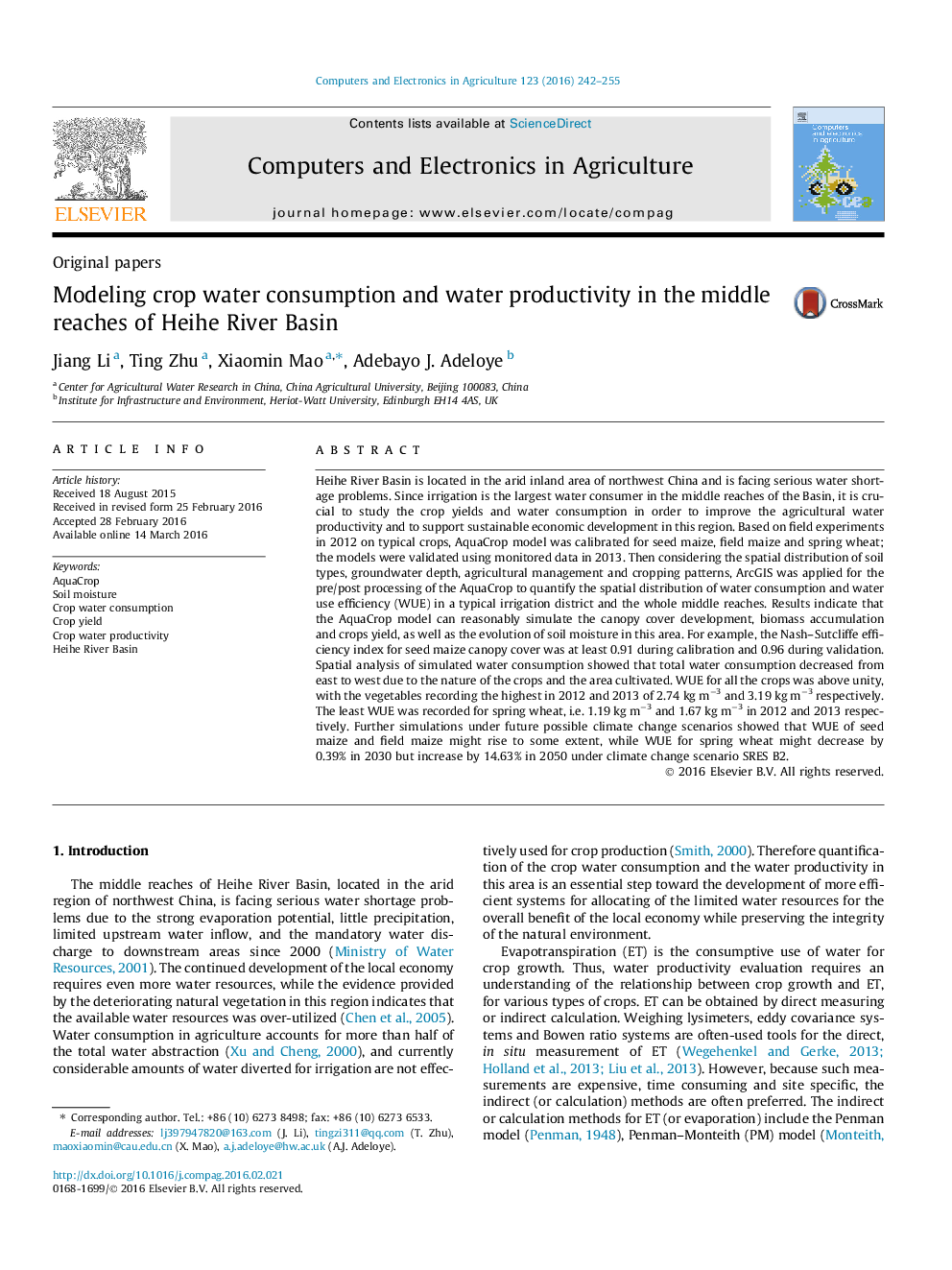| کد مقاله | کد نشریه | سال انتشار | مقاله انگلیسی | نسخه تمام متن |
|---|---|---|---|---|
| 83960 | 158856 | 2016 | 14 صفحه PDF | دانلود رایگان |
• AquaCrop and GIS was used to quantify water consumption and water use efficiency.
• Water consumption decreased from east to west, mainly varied from crop area/types.
• WUE of maize may increase under climate change scenario SRES B2.
• WUE of spring wheat were predicted to decrease in 2030 but increase in 2050.
Heihe River Basin is located in the arid inland area of northwest China and is facing serious water shortage problems. Since irrigation is the largest water consumer in the middle reaches of the Basin, it is crucial to study the crop yields and water consumption in order to improve the agricultural water productivity and to support sustainable economic development in this region. Based on field experiments in 2012 on typical crops, AquaCrop model was calibrated for seed maize, field maize and spring wheat; the models were validated using monitored data in 2013. Then considering the spatial distribution of soil types, groundwater depth, agricultural management and cropping patterns, ArcGIS was applied for the pre/post processing of the AquaCrop to quantify the spatial distribution of water consumption and water use efficiency (WUE) in a typical irrigation district and the whole middle reaches. Results indicate that the AquaCrop model can reasonably simulate the canopy cover development, biomass accumulation and crops yield, as well as the evolution of soil moisture in this area. For example, the Nash–Sutcliffe efficiency index for seed maize canopy cover was at least 0.91 during calibration and 0.96 during validation. Spatial analysis of simulated water consumption showed that total water consumption decreased from east to west due to the nature of the crops and the area cultivated. WUE for all the crops was above unity, with the vegetables recording the highest in 2012 and 2013 of 2.74 kg m−3 and 3.19 kg m−3 respectively. The least WUE was recorded for spring wheat, i.e. 1.19 kg m−3 and 1.67 kg m−3 in 2012 and 2013 respectively. Further simulations under future possible climate change scenarios showed that WUE of seed maize and field maize might rise to some extent, while WUE for spring wheat might decrease by 0.39% in 2030 but increase by 14.63% in 2050 under climate change scenario SRES B2.
Journal: Computers and Electronics in Agriculture - Volume 123, April 2016, Pages 242–255
